Are you thinking about joining the Air Force but worried your tattoos might make it impossible? Don’t let permanent ink stand in the way of achieving your goals—it’s possible to get accepted with tattoos as long as they meet certain criteria. The important thing is understanding how and where body art is allowed, so keep reading to learn what the policy on tattoos in the Air Force actually looks like. We’ll cover everything from size restrictions, acceptance of off-limit symbols and imagery, and acceptable locations for body art, so you can make an informed decision about whether or not having a tattoo is an obstacle on your path towards military service.
Can You Have Tattoos in the Air Force?
Tattoos are allowed in the Air Force, but there are limits on where they can be visible. However, having tattoos is not against any rules or discouraged by the Air Force. The Air Force has regulations for body art and certain size limitations for tattoos, but they do not prohibit any form of body art.
The Air Force allows recruits with existing tattoos to join as long as they meet the guidelines outlined by the Military Entrance Processing Station (MEPS). Smaller tattoos that cover less than 25% of an exposed body part may be allowed. Tattoos that are larger than 25% must have been applied before enlistment and will be evaluated on a case-by-case basis by MEPS personnel. Additionally, any visible offensive, extremist or indecent content is prohibited under service regulations. [1]
Finally, it’s important to note that all branches of the military reserve the right to reject any prospective recruit for any reason. It is ultimately up to each individual branch whether someone with visible body art will be accepted into their ranks. For this reason, it is crucial that those who want to join the Air Force make sure they are familiar with the regulations and standards for body art.
All in all, tattoos are not prohibited in the Air Force. It is important to understand the rules and regulations regarding body art before and during military service. By understanding these guidelines, members can ensure their ink meets military standards and maintain a standard of good taste.
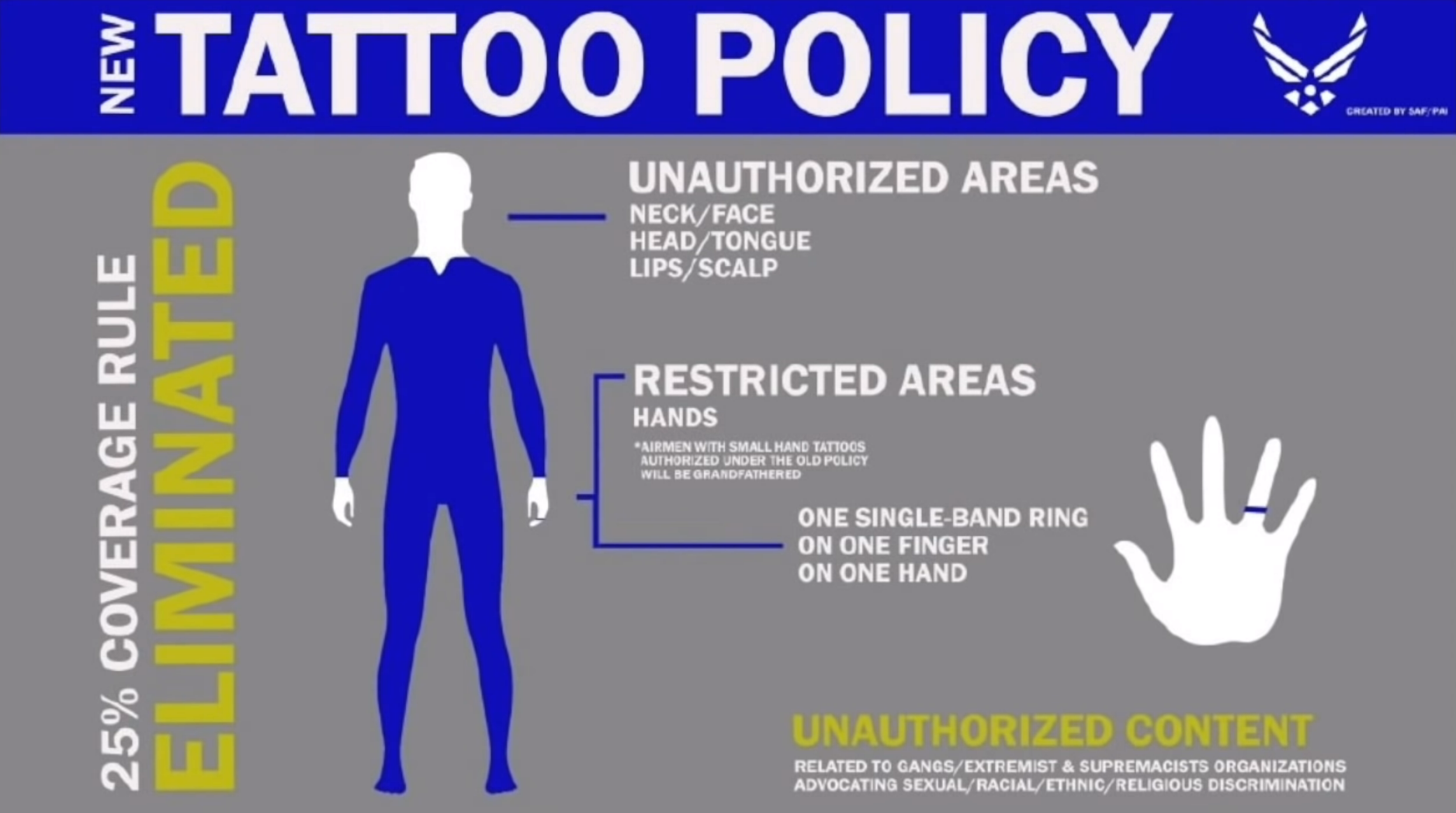
What Types of Tattoos Are Permitted in the Air Force?
The Air Force has specific regulations concerning the types of tattoos that are allowed. Tattoos must not be visible above the t-shirt collar, on the head, face, or neck. Additionally, these tattoos must not be indecent, sexist or racist in nature. Furthermore, branding or scarification is prohibited and any body piercings must be removed prior to entering basic training.
Ultimately, the Air Force reserves the right to decide any and all tattoos based on its own regulations. It is important for individuals to research and understand these regulations before considering getting a tattoo that may be considered inappropriate. If an individual has any doubts as to whether or not their tattoo would qualify under Air Force standards, it is best to seek clarification from a recruiter or supervisor prior to proceeding with the tattoo. This will help ensure they are in compliance with official guidelines and can remain eligible for service in the Air Force. [2]
Air Force Regulations on Tattoos
The U.S. Air Force has regulations governing tattoos and body art that must be followed by all service members. According to these rules, tattoos are prohibited on the head, face, neck above the t-shirt line, inside the mouth or ears, any part of the hands and fingers with exceptions for a single band tattoo of no more than 3/8 inch in width on one finger only, below the elbow or knee or on genitals*. Any brandings or scarifications are prohibited anywhere on the body*. Additionally, offensive tattoos (e.g., those depicting nudity, profanity, racism etc.)* are not permitted per U.S. Air Force Instruction 36-2903.
The U.S. Air Force regulations on tattoos are constantly changing, so it is important to stay up to date with any changes in policy as they occur. In summary, air force personnel must ensure that their tattoos comply with all regulations before getting inked.
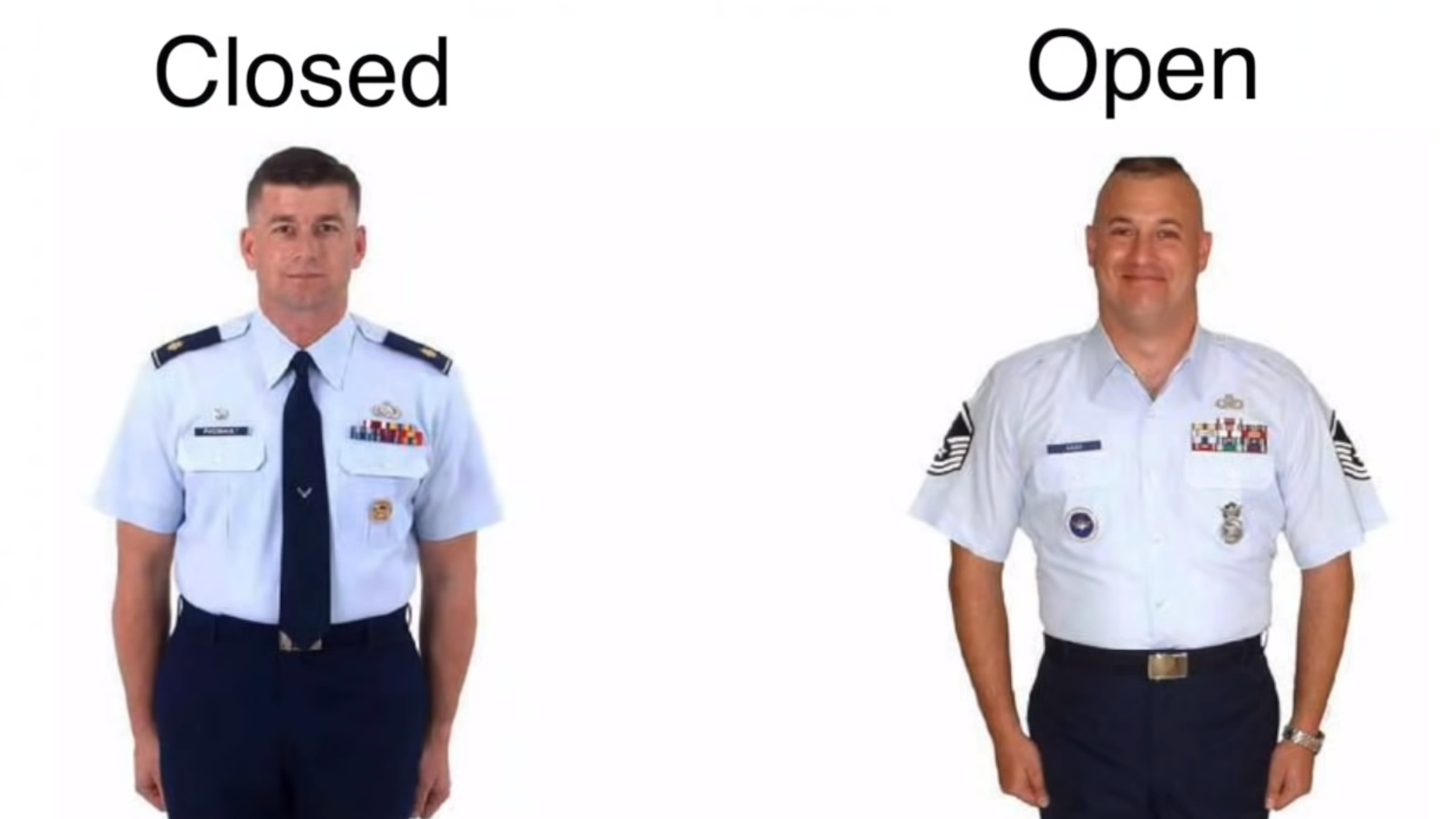
The History of Air Force Tattoo Policy
The Air Force’s current tattoo policy has changed over the years. Back in 1981, tattoos were banned from any visible areas of the body. This policy was revised in 1997 and allowed for small tattoos on the hands, neck, and face that could not be seen when in uniform. In 2003, this policy was further revised to allow for larger tattoos covering no more than 25 % of an exposed body part. Any designs that are deemed offensive or inappropriate are still prohibited. The Air Force also requires that all tattoos remain covered while wearing a military uniform and if someone is found with visible tattoos they will have to remove them or face disciplinary action or separation from service.
Ultimately, anyone considering getting a tattoo should take into account the guidelines of the U.S. Air Force before committing permanently to any design. The current policy allows for small tattoos on hands, neck, and face that cannot be seen when wearing a military uniform and larger tattoos covering no more than 25 % of an exposed body part. It is also important to note that any designs deemed offensive or inappropriate are prohibited from being visible while in service. [3]
By understanding the history and current policy of Air Force tattoos, anyone considering getting a tattoo can make an informed decision on whether or not to proceed with getting one while serving. The Air Force wants all airmen to be professional and follow its standards of appearance at all times. As long as any design is kept within their guidelines then it should be ok for a servicemember in the Air Force to get a tattoo.
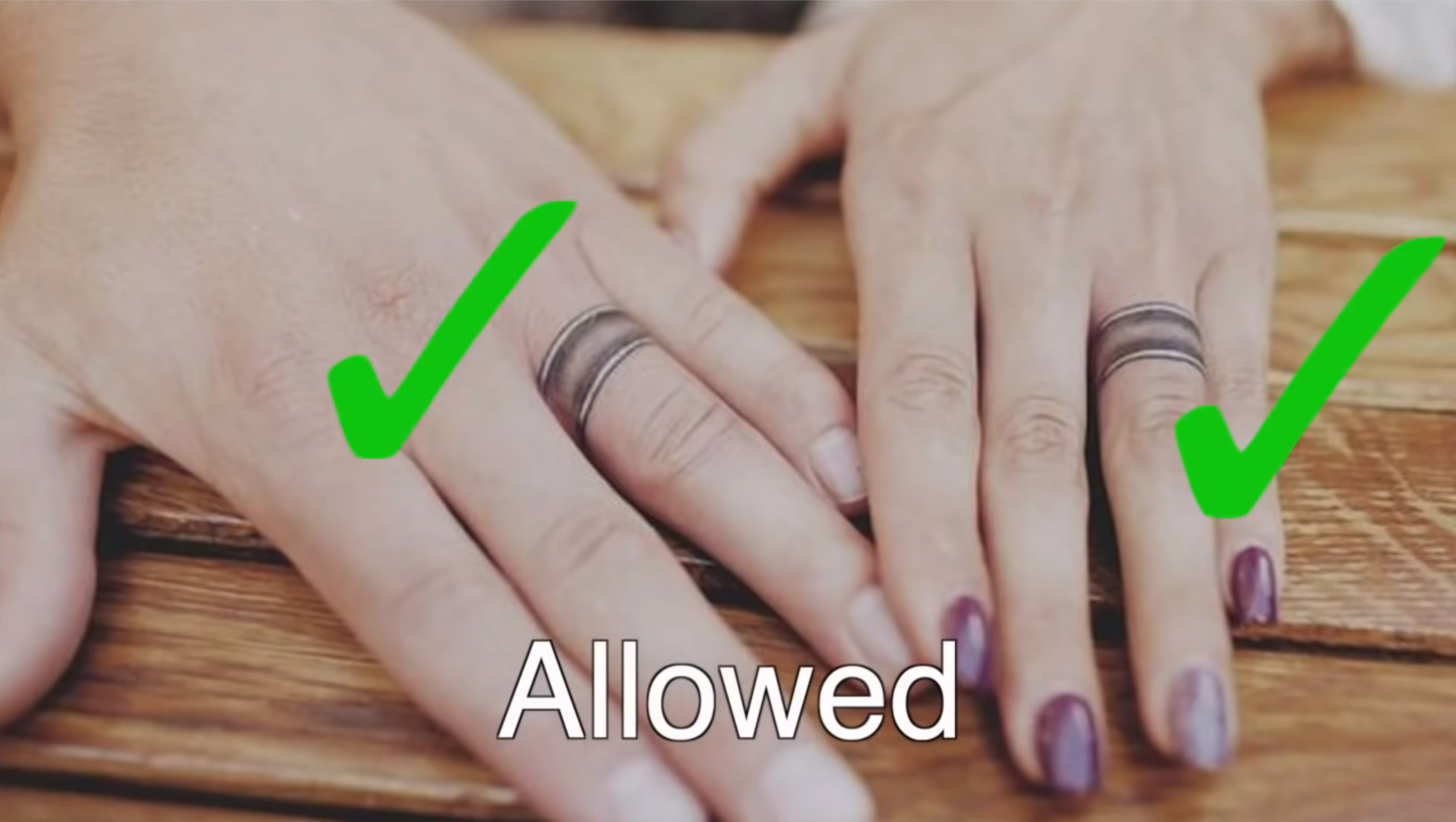
Pros and Cons of Getting a Tattoo While Serving In the Air Force
A. Pros of Having a Tattoo While Serving In the Air Force
- Expressing Yourself – A tattoo can be a great way to express your individuality while serving in the Air Force and show off your personality. It’s also a great way to commemorate an important event or moment in your life, such as graduating from basic training or receiving an award or medal.
- Building Camaraderie – As tattoos are becoming more accepted by mainstream society, they can be seen as a form of bonding among those who serve in the military. Getting matching tattoos with fellow airmen can be a great way of building connections and camaraderie within your unit.
B. Cons of Having a Tattoo While Serving In the Air Force:
- Professionalism Issues – While tattoos are becoming more accepted by mainstream society, the Air Force still has a policy that prohibits large or visible tattoos on the arms, legs, and hands. These policies are in place to ensure that airmen can maintain a professional appearance at all times.
- Career Limitations – Certain career fields may require airmen to have either no tattoos or very small ones. For example, special duty assignments may be off-limits if you have any visible tattoos. Additionally, certain military schools may also prohibit those with visible tattoos from participating in their programs.
In conclusion, getting a tattoo while serving in the Air Force can be an excellent way of expressing yourself and building camaraderie among your fellow airmen. However, it’s important to keep in mind that there may be some professional and career limitations associated with having a visible tattoo, so it’s important to weigh the pros and cons before making any decisions. [4]
Alternatives to Getting a Permanent Tattoo for Those Serving In the Air Force
A. Temporary Tattoos
Temporary tattoos are an alternative for those who wish to express themselves without the commitment of a permanent tattoo. These come in many forms and can last from several days to several weeks, depending on the type used. They generally have less intricate designs than permanent tattoos but still provide an opportunity to show off personal style.
B. Henna Tattoos
Henna tattoos are an increasingly popular option due to their temporary and painless nature. Henna is a dye made from the powdered leaves of the henna plant, which is typically mixed with essential oils and lemon juice before application. It is applied in intricate patterns directly to the skin, where it will gradually fade over several weeks or months.
C. Body Art Accessories
Body art accessories such as jewelry and piercings can also be used to express one’s individuality without going for a permanent tattoo. Jewelry pieces can come in many varieties and styles, allowing individuals to choose something that reflects their personal taste. Piercings are another option for those seeking a more permanent form of body modification but still want the flexibility to remove them at any time.
D. Permanent Makeup
Permanent makeup is another option for those seeking a long-lasting form of body art without the commitment of a traditional tattoo. This method involves using special inks and needles to permanently apply cosmetic pigments to the skin that can last up to five years before needing touch ups. Permanent makeup provides an opportunity to enhance features such as eyebrows or lips without the need for daily maintenance.
No matter which route you choose, following regulations on tattoos in the Air Force will ensure that it does not interfere with your service. Knowing all of your options is key when deciding the best way to express yourself while still adhering to military regulations.
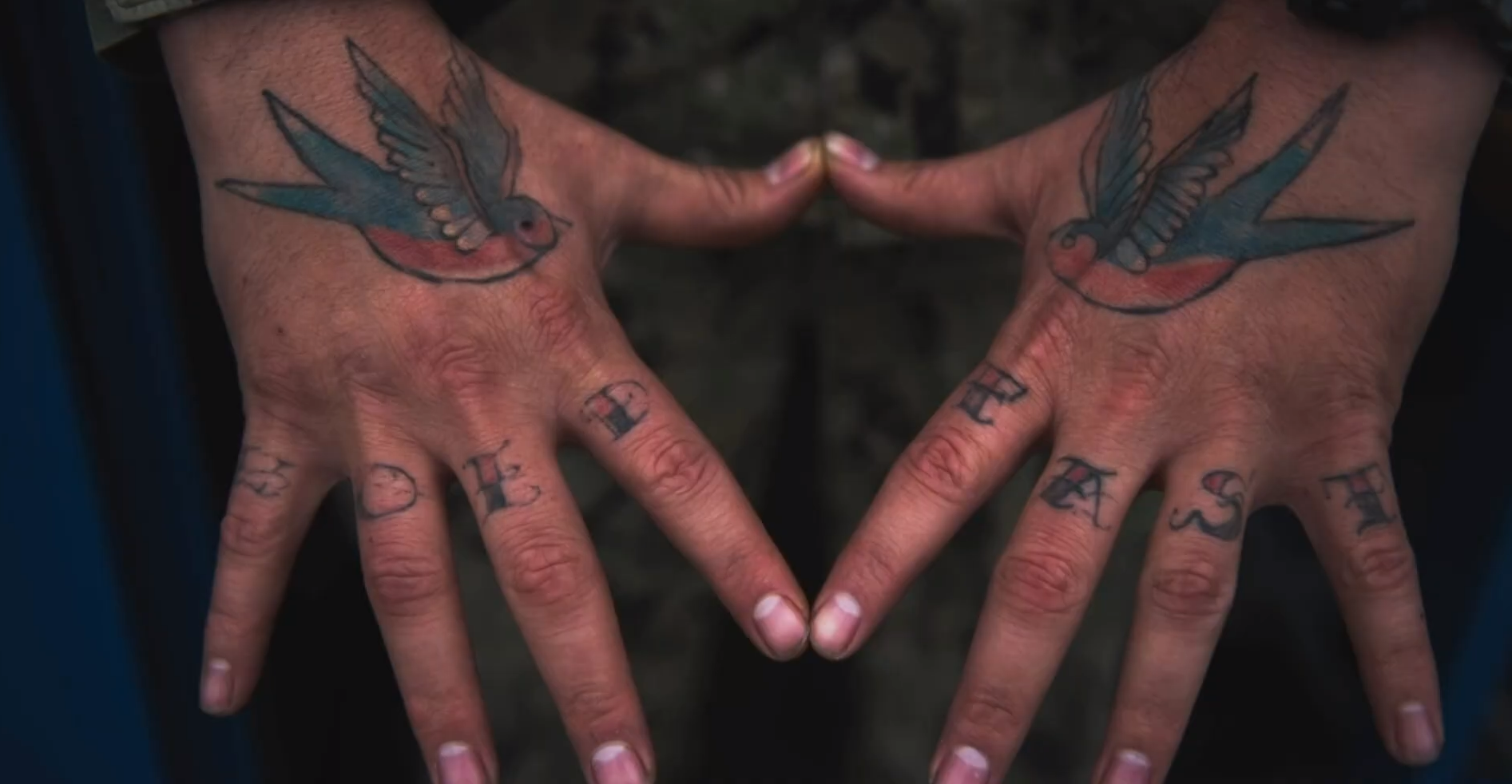
What to Consider Before Getting a Tattoo for Airmen
A. Health Risks Associated with Tattoos
Getting a tattoo involves puncturing the skin at a very deep, which carries with it certain risks. The most common risks include infection, allergic reactions, scarring, and longer term effects such as changes in skin texture or pigment. Airmen should also consider that some tattoos may have to be removed if they impede uniform wear or violate Air Force regulations.
B. Uniform Regulations for Tattoos
The Air Force has strict rules on tattoos visible while wearing the uniform. These regulations are updated periodically and must be followed by all airmen; failure to comply can result in disciplinary action. Visible tattoos are only permitted on the head, face, neck above the t-shirt line (including behind the ears) and hands. Any design covering more than 25% of the exposed area of an arm or leg is also prohibited.
C. Legality and Moral Issues With Tattoos
In addition to health risks and uniform regulations, Airmen should also consider the legal ramifications and moral implications of getting a tattoo. Some tattoos could be interpreted as offensive or inappropriate, or may not align with Air Force values. Airmen should be mindful that any visible tattoos on their body reflect upon them and the Air Force. [5]
Ultimately, every individual must make their own decision about whether or not to get a tattoo. However, Airmen should take into consideration all of the potential risks and consequences before taking the plunge.

Can Navy Seals Have Tattoos?
Yes – Navy Seals can have tattoos! Although tattoos have become much more accepted in the military, there are still restrictions and guidelines when it comes to what type of tattoos can be displayed. As a general rule, The Department of Defense restricts any visible body art on hands, wrists, neck, or face for all branches including Navy Seals. Additionally, any tattoo that is deemed offensive or vulgar by the commanding chief should not be displayed.
In conclusion, yes, Navy Seals can have tattoos as long as they are in accordance with Department of Defense’s regulations and not deemed offensive or vulgar by the commanding chief. It is ultimately up to each individual Seal’s Commanding Officer to make the final determination on whether a particular tattoo design meets expectations set forth by the branch.
How Much Does It Cost to Remove a Tattoo?
Tattoo removal is an expensive process. It usually involves a series of treatments, and the price can vary depending on the size of the tattoo and how deep the ink is in your skin. The average cost for laser tattoo removal ranges from $200 to $500 per session, making it one of the more expensive methods of removing tattoos. Other options such as topical creams may be cheaper but are generally less effective than laser treatments. If you’re looking to have a tattoo removed for military purposes, your best bet is to go through a professional clinic or spa that has experience with the procedure. [6]
Not only will they be able to provide you with the most up-to-date equipment and techniques, but they’ll also be able to answer any questions you may have and provide advice on how to properly care for your skin after the procedure. It’s important to note that there is no guarantee of success when it comes to tattoo removal, so be sure to do your research and ask lots of questions before committing to any treatment plan.
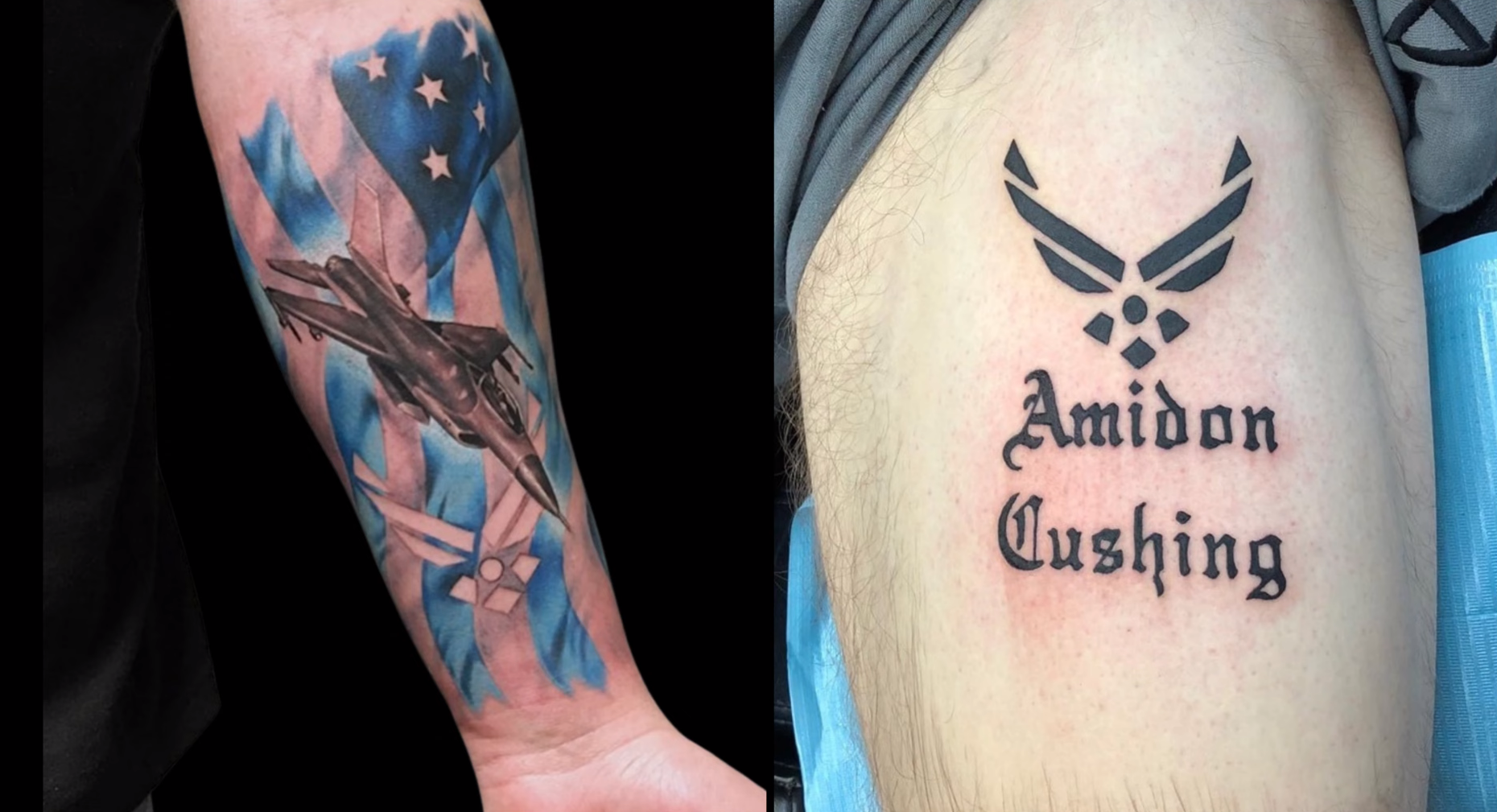
Overall, removing a tattoo can be an expensive process, but if it means joining the Air Force or staying in service, it could be an investment worth making. So if you’re looking into getting a tattoo removed for military purposes, make sure you understand all of the costs involved prior to beginning treatments. [7]
FAQ
What tattoos can’t you have in the Air Force?
The Air Force forbids any tattoos that express racism, sexism, or extremism of any kind. All tattoos must be in good taste and not advocate anything unlawful. Additionally, tattoos on the head, face, neck above the t-shirt line, and hands are forbidden.
Can you join the Air Force with existing tattoos?
Yes – You can join the Air Force with existing tattoos if they meet all standards for acceptable body art outlined by the AFI 36-2903 (AFI is short for “Air Force Instruction”). This includes having no visible symbols which express racism or sexism. Tattoos located in prohibited areas may be covered up with makeup instead of removal at the applicant’s request. Additionally, tattooists must provide documentation that the tattoo was applied in a state-regulated shop or certified facility.
What happens if you get tattoos after joining the Air Force?
All new tattoos must be reported and evaluated by your commander to ensure they are in compliance with AFI 36-2903. Tattoos that do not meet AFI standards may have to be removed, covered up with makeup, or modified before they can be approved. Additionally, any visible symbols which express racism or sexism will not be accepted under any circumstances.
Are there any restrictions on size or color of tattoos?
The Air Force does not specifically limit the size of tattoos; however, all body art must be “in good taste” and must not appear to advocate anything unlawful. Additionally, all tattoos must be one solid color. Multi-colored tattoos are not allowed.
Is laser tattoo removal covered by the Air Force?
Yes – The Air Force does offer limited coverage for laser tattoo removal if it is deemed necessary due to AFI 36-2903 compliance. However, this coverage may vary on a case by case basis and be subject to certain restrictions. Contact your local Air Force recruiter or commander for more information.
What other body modifications are prohibited in the Air Force?
Other prohibited body modifications include tongue splitting, scarification, branding, or any kind of intentional mutilation or cutting of skin that was not done in a medical setting. These kinds of body art will not be accepted under any circumstances.
Can you add or remove tattoos while in the service?
Yes – The Air Force allows for both addition and removal of tattoos while in the service, as long as they meet all requirements outlined by AFI 36-2903. Any new tattoos must be reported and evaluated by your commander to ensure they are in compliance with regulations before being approved. Additionally, existing tattoos may have to be covered up with makeup or removed if deemed necessary. Contact your local Air Force recruiter for more information on specific guidelines and restrictions related to body art modifications.
Which military branch accepts tattoos?
The U.S. Armed Forces have different policies when it comes to tattoos. The Air Force, Navy, Army and Marine Corps all have regulations that govern the type and amount of body art they allow. Each branch has their own set of standards when it comes to tattoos, so it’s important for potential enlistees to understand the rules before making any decisions regarding body art.
The Air Force is generally the most lenient when it comes to tattoos; they allow up to four visible tattoos below the elbow or knee, with a total coverage area of no more than 25% on each arm or leg. All other tattoos must be covered up while in uniform with a flesh-toned tattoo cover or bandage. Additionally, tattoos that are considered discriminatory, obscene or extremist in nature are not allowed.
The Navy also permits four visible tattoos on the forearm and lower leg/ankle area, but doesn’t have an overall coverage limit like the Air Force does. Facial tattoos and hand tattoos are not allowed in any branch of the military unless you receive a waiver due to religious reasons or medical necessity. The Marine Corps can only allow one visible tattoo below the elbow or knee, while tattoos anywhere else on the body must be covered up with clothing or makeup. Lastly, the Army allows two visible tattoos below the elbows or knees and requires that all other tattoos be covered even when wearing combat uniforms.
Can I get a tattoo before basic training?
The short answer is yes, but there are some restrictions. Specifically, all tattoos must be approved by your recruiter. Your recruiter will review the size, placement, and subject matter of any proposed tattoos to ensure they meet Air Force standards. In general, tattoos should not be visible while wearing standard issue uniform items like a military flight suit or dress uniform. Additionally, recruiters will not approve tattoos containing offensive language or symbols (e.g., swear words, racial slurs). It is important to keep in mind that if you violate these rules once you join the Air Force, you could face disciplinary action.
Useful Video: Air Force Tattoos Policy
Conclusion
In conclusion, Air Force personnel can have tattoos as long as they comply with the regulations. Any tattoos placed above the collarbone must be within the acceptable standards for artwork and cannot depict anything considered obscene or racist. In addition to size requirements, all enlisted members are required to cover visible tattoos when wearing their uniform in public areas of duty. Furthermore, those applying for Commissioned Officers are limited to four total body tattoos regardless of size. With these restrictions in mind, individuals interested in joining the Air Force may still have a few options for expressing themselves through body art while keeping within regulation guidelines. By complying with these regulations and getting approval from their commanding officer, Airmen will be able to proudly display their unique artwork without fear of discipline or repercussion.
References:
- https://www.af.mil/News/Article-Display/Article/3315745/department-of-the-air-force-updates-policies-procedures-to-recruit-for-the-futu/
- https://www.airforcetimes.com/news/your-air-force/2023/03/03/officials-ok-some-hand-and-neck-tattoos-for-airmen-guardians/
- https://www.operationmilitarykids.org/air-force-tattoo-policy/
- https://www.americantattoosociety.com/air-force-tattoo-policy-updated-for-2022/
- https://removery.com/tattoo-policies/military/us-air-force-tattoo-policy/
- https://foreverwingman.com/can-you-have-a-tattoo-in-the-air-force/
- https://veteransbreakfastclub.org/your-simple-guide-to-military-tattoo-policies-for-2021-2022/


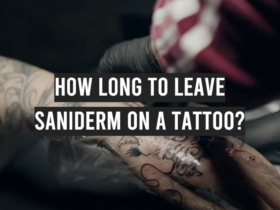


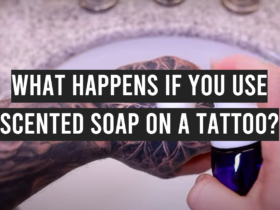
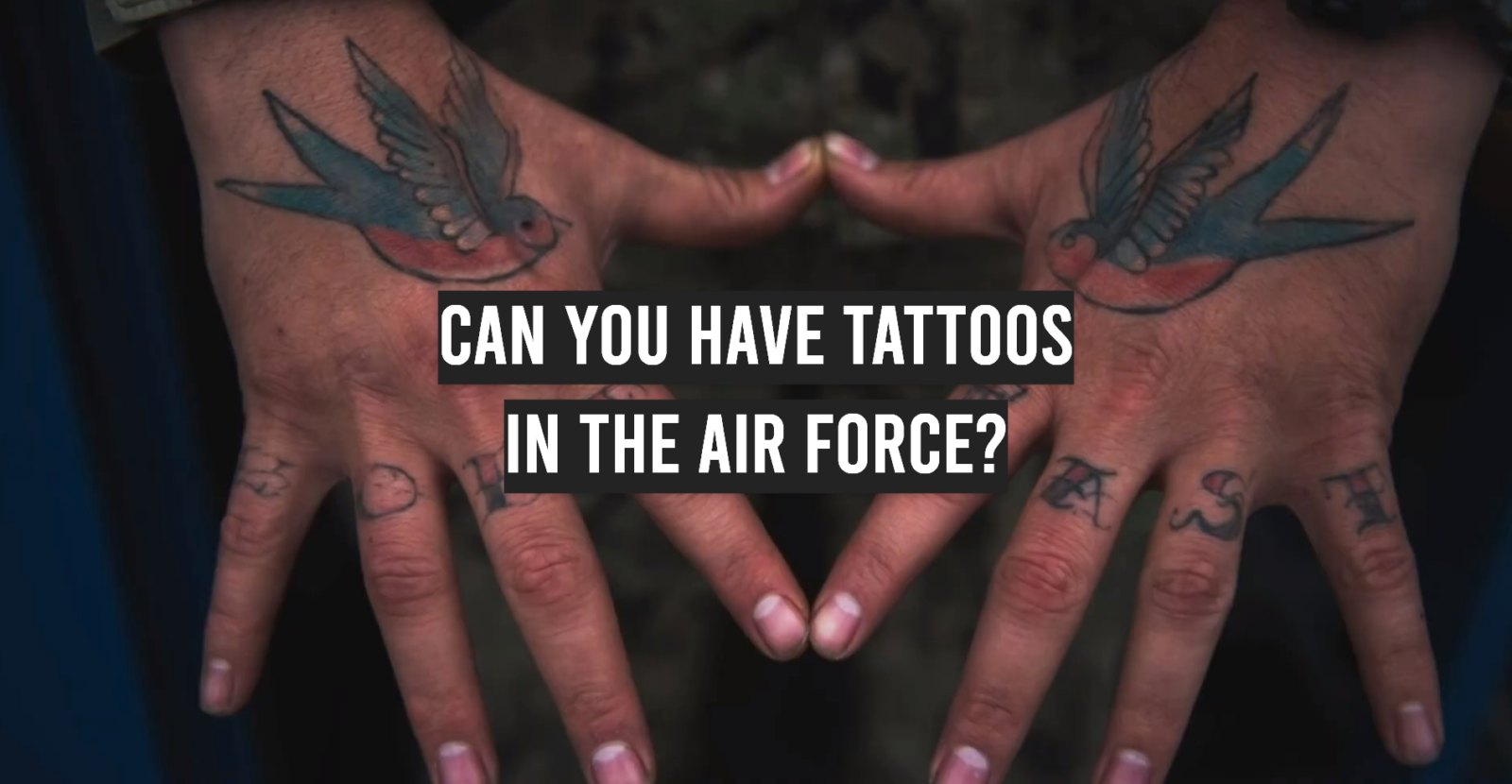
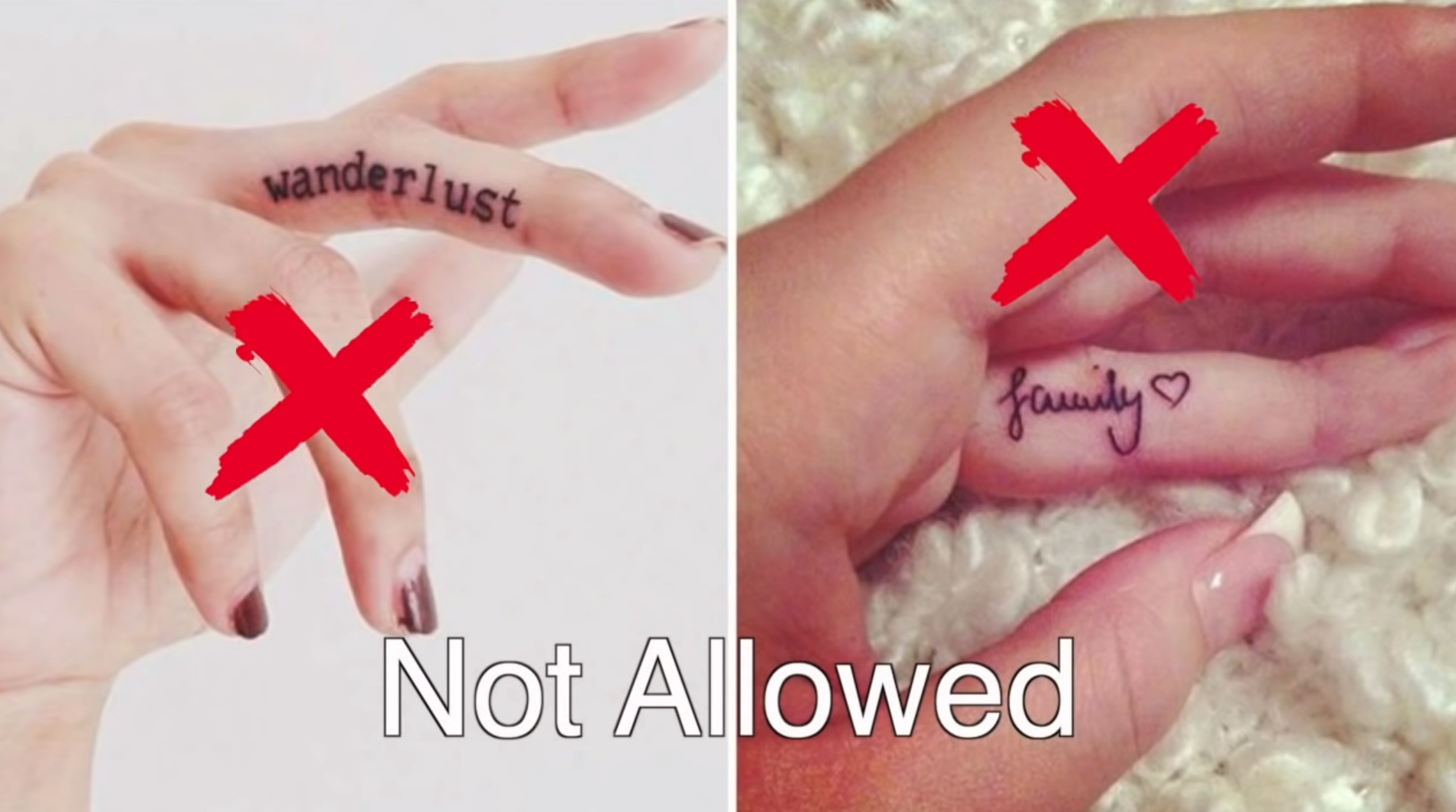

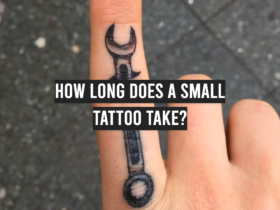

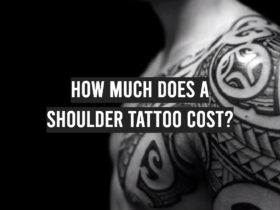
Leave a Review